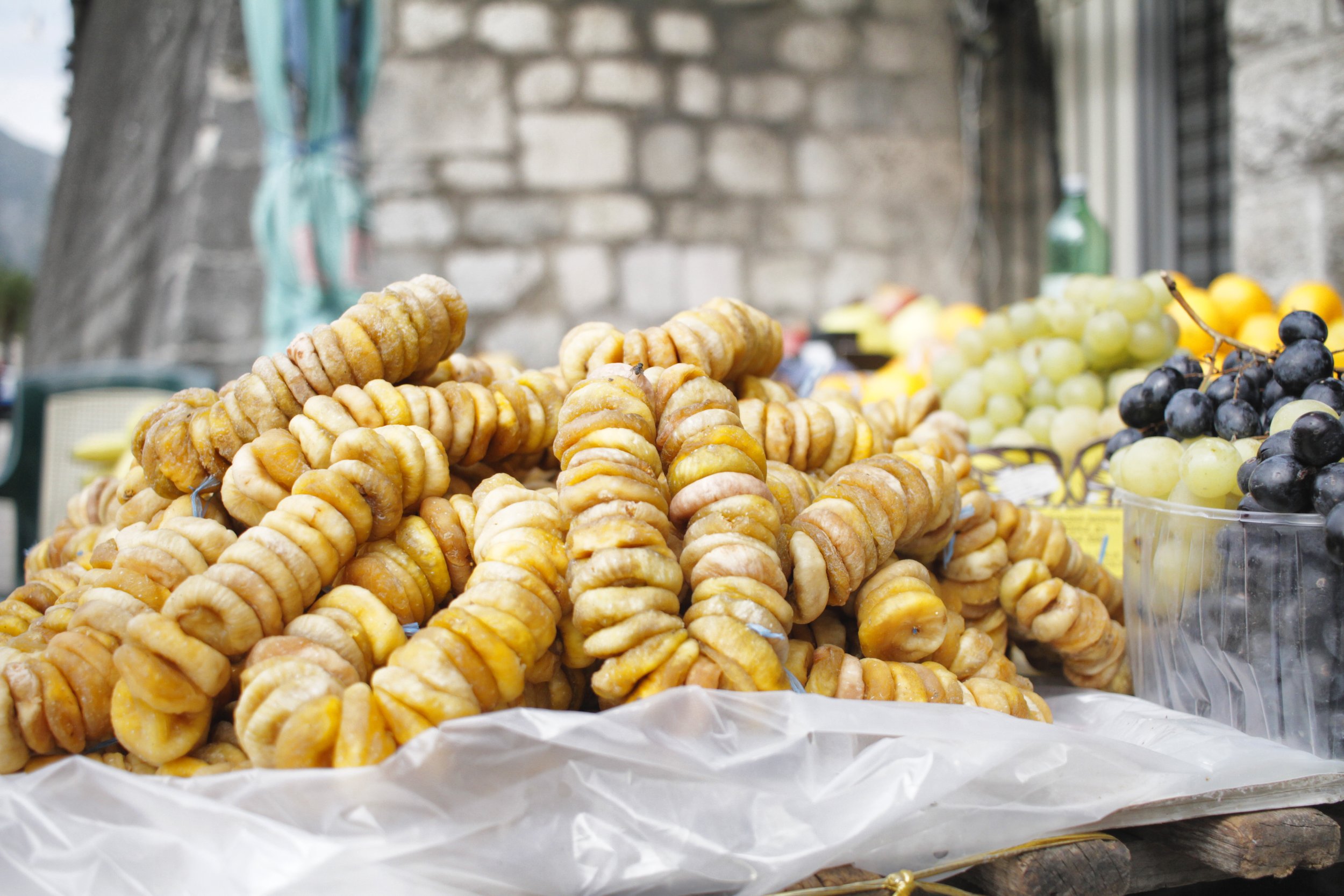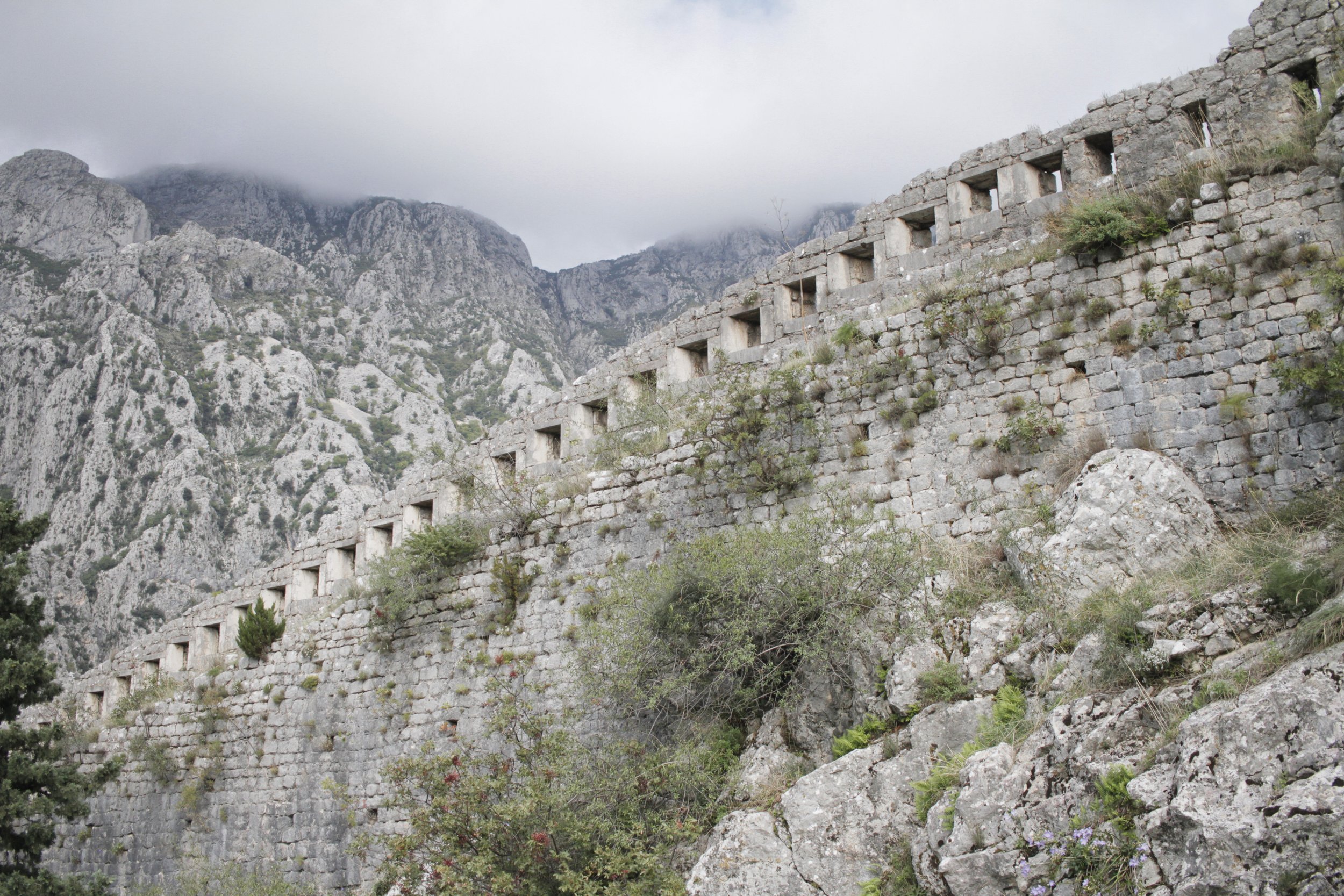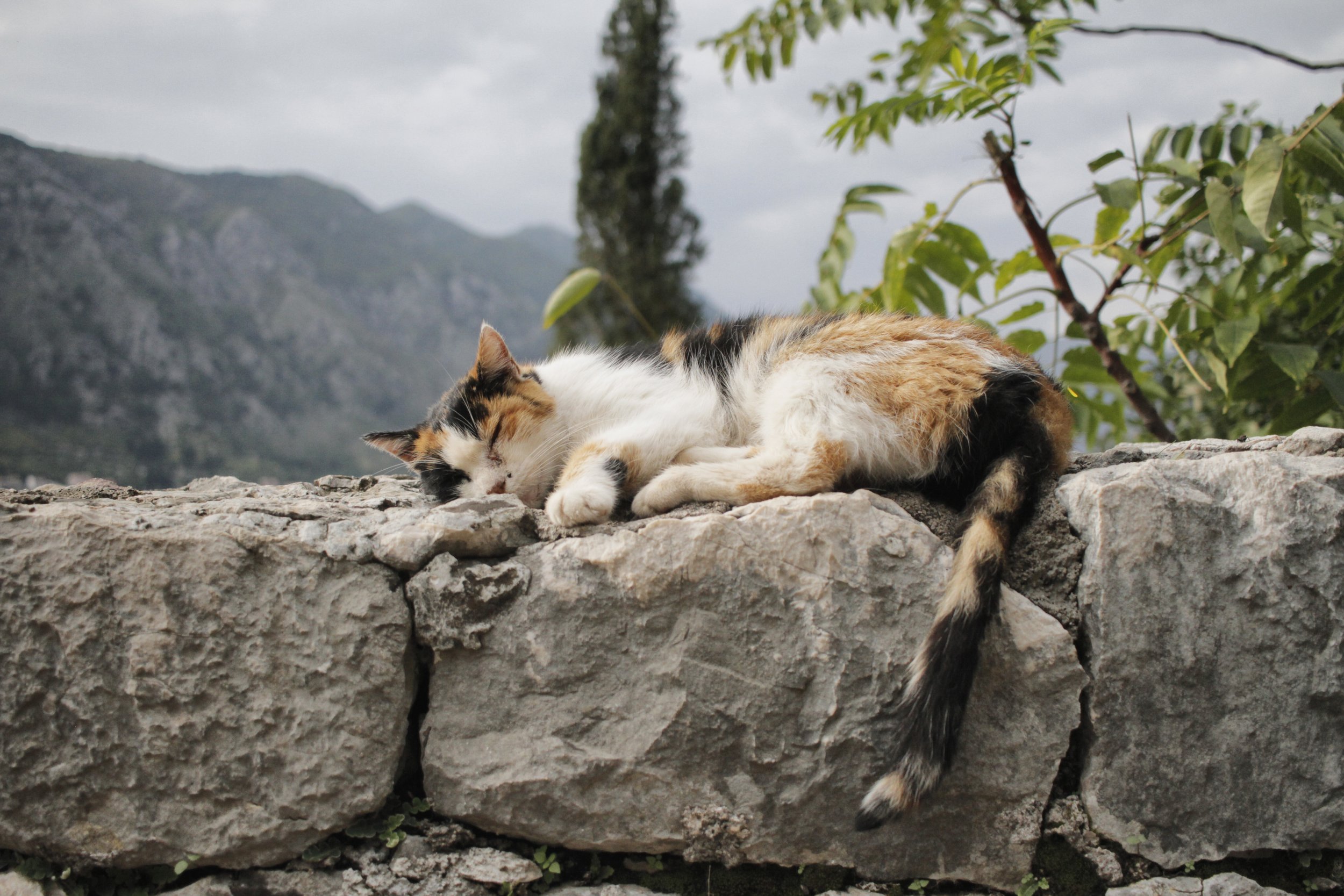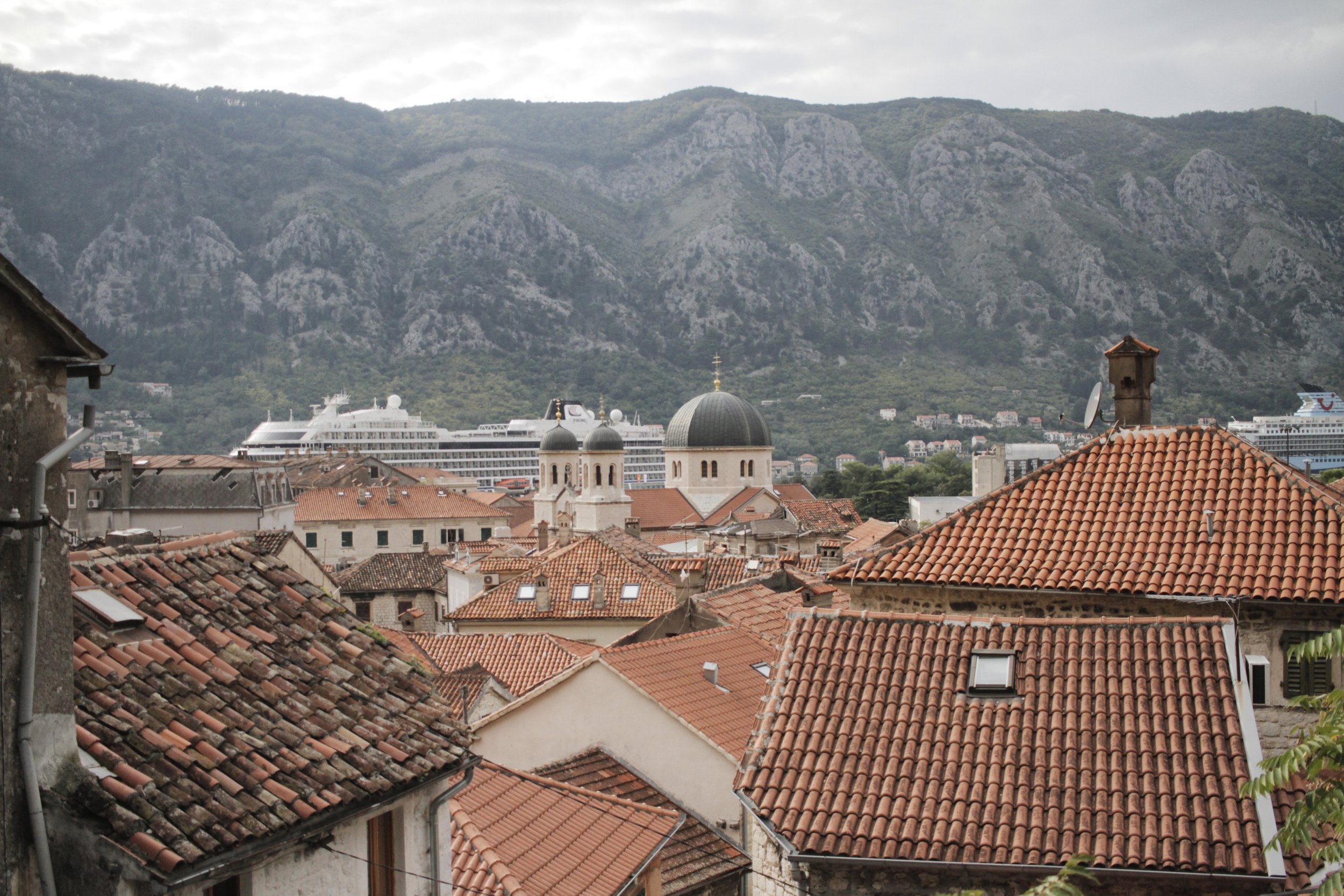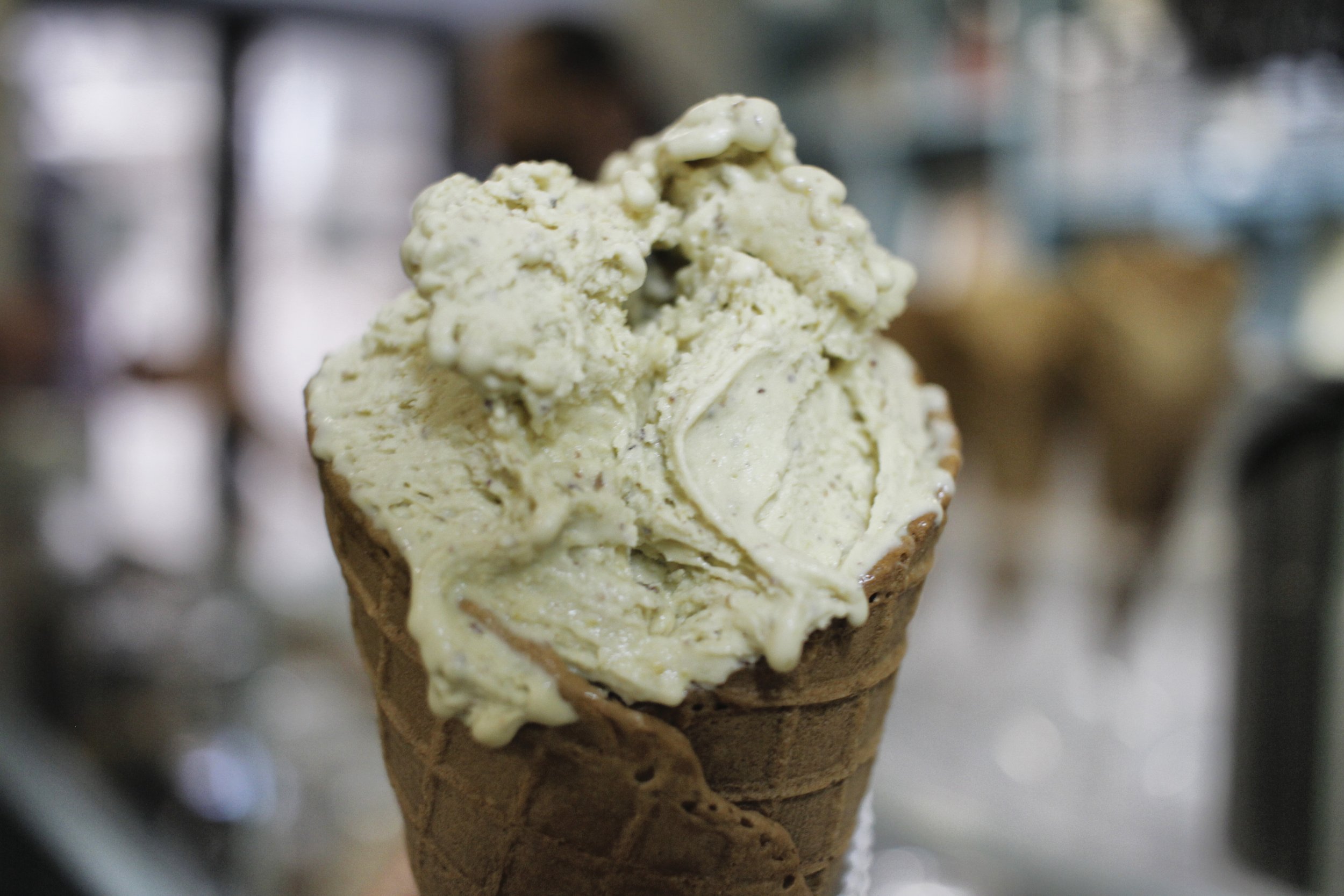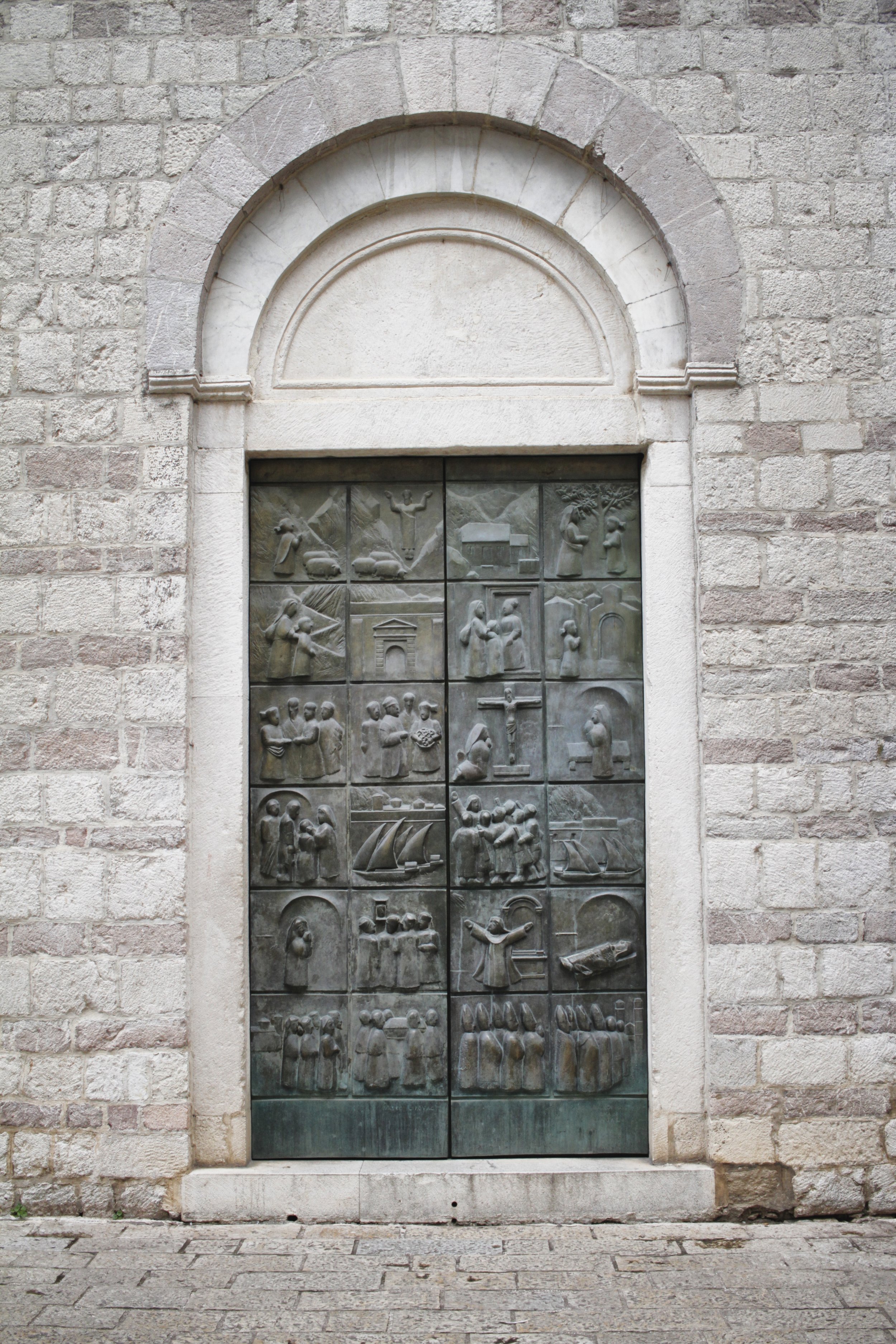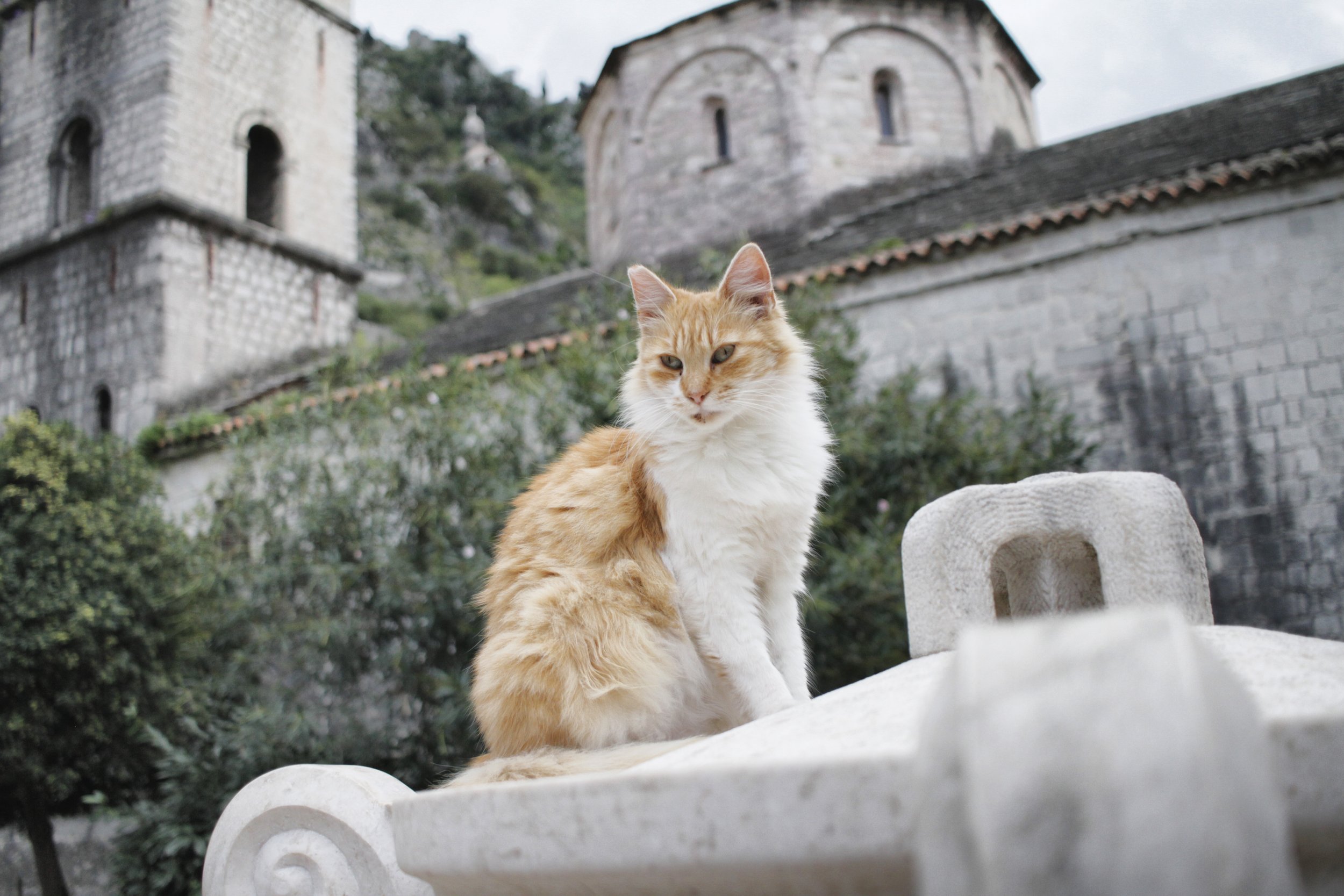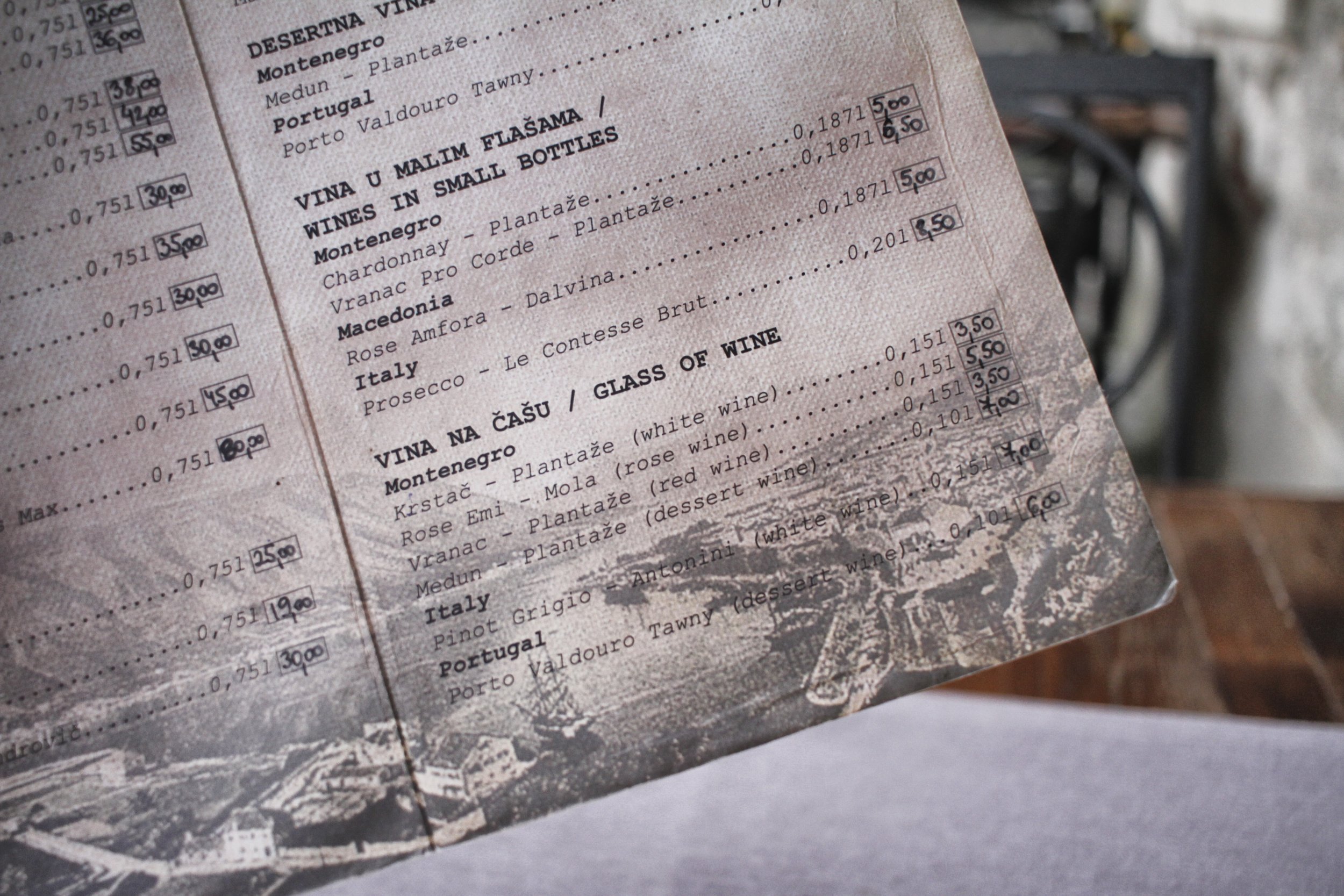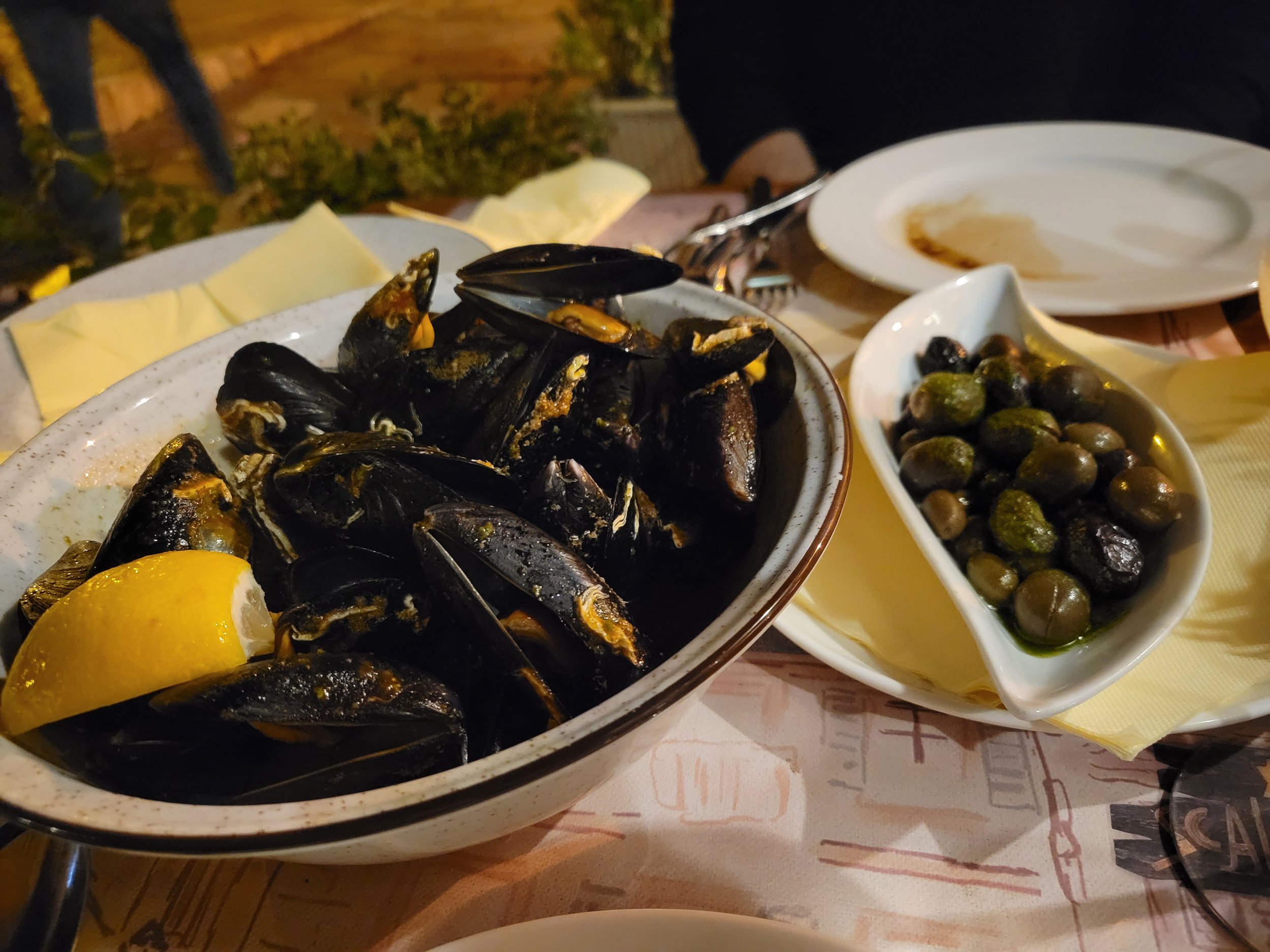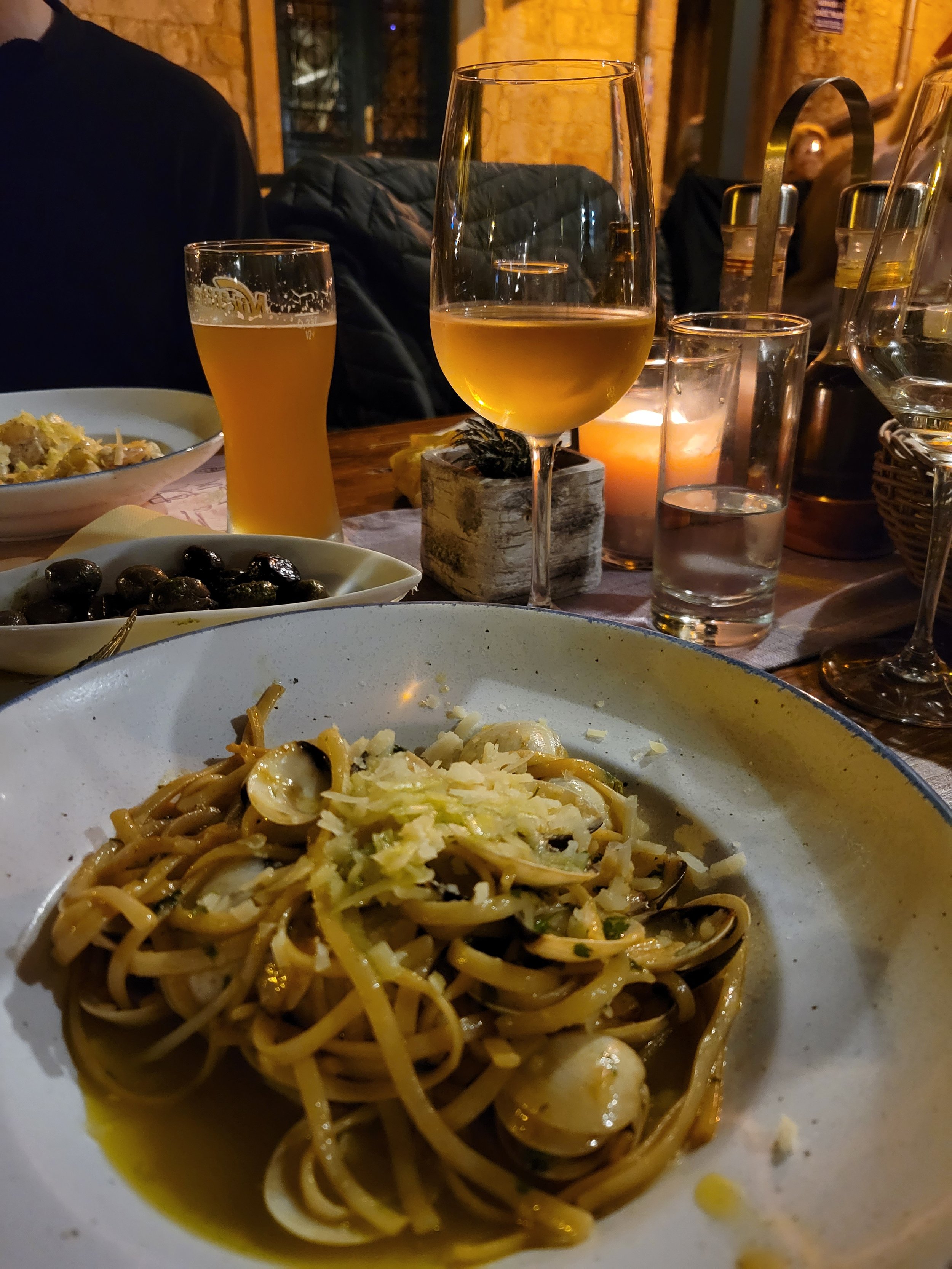Adriatic’s Coastal Medieval Town of Kotor
Best things to do in Kotor: get medieval with this travel guide.
Montenegro, literally meaning “Black Mountain,” is a wildly fascinating country and one of the most beautiful in the world.
With a rich history dating back to the Dark Ages, Montenegro has had an interesting past. Beginning in the 14th century, the majority of Montenegro was ruled by the Venetian Republic with the first use of its name during the late 15th century.
In 1696, Montenegro reached semi-autonomy after falling under the Ottoman Empire, followed by independence in 1878.
By 1910, the country became a kingdom and after World War I, part of Yugoslavia. With the separation of Yugoslavia, both Serbia and Montenegro proclaimed a federation.
Ultimately, in 2006 Montenegro declared independence, making it one of the newest internationally recognized countries in the world.
These days, Montenegro is known for rugged terrain, glacial lakes and medieval towns that lie in the Bay of Kotor, a UNESCO World Heritage Site.
Kotor, historically known as Cattaro, is a fortified town on the Adriatic coast, nestled into the Bay of Kotor.
A natural fjord, the bay and Kotor itself are characterized by ancient ruins, winding streets and more charm than one can ask for.
Towering city walls, mesmerizing views of the bay and delicious cuisine are only a few of my favorites ingredients making up Kotor.
And the friendly local faces and countless felines roaming the streets only add to the appeal of the oldest town in Montenegro.
My time leading up to Montenegro first began in Croatia, landing in the coastal town Dubrovnik, also known as the “Pearl of the Adriatic.”
From there, I joined a day trip into Mostar, Bosnia and Herzegovina, the little gem of the Balkans, and then traveled north up the coast to Split, a Dalmatian seaside city brimming with Roman ruins and natural splendor. In Split, I jumped on a speed boat to explore the Blue Cave and surrounding islands and then moved on to Central Croatia, stopping at Plitviče Lakes National Park.
Passing through Croatia’s capital, Zagreb, I flew to Podgotica, Montenegro’s capital city and made my way to magical Kotor. After exploring what Kotor had to offer, I joined day trips to both north Montenegro’s Durmitor National Park, Tara Canyon and Ostrog Monastery and greater Montenegro for Lovćen’s Mausoleum, Royal Old Capital and Skadar Lake.
Best Things to Do in Kotor
Travel / From Plitvice National Park to Bay of Kotor
Discover / Fresh finds at a local farmers market
Admire / The Fortified Wall of Kotor
Climb / Kotor Fortress
Savor / Artisan gelato & admire local antiques
Eat (& Shop) / Your heart out in Old Town
Travel from Plitvice National Park to Bay of Kotor
My 24 journey from Plitvice National Park, Croatia to Kotor, Montenegro involved a handful of steps but was surprisingly, very smooth and straightforward.
Travel / Surely this can’t be the only way to reach the Bay of Kotor but it does take a certain level of detailed coordination and timing.
Plitvice National Park 》Zagreb Bus Terminal (two hours by bus)
Zagreb Bus Terminal 》Zagreb Airport (20 minutes by taxi)
Zagreb Airport 》Dubrovnik Airport (one hour by plane)
Dubrovnik Airport 》Dubrovnik Bus Terminal (20 minutes by taxi)
Dubrovnik Bus Terminal 》Border (one hour by bus)
Border 》Kotor Bus Terminal (two hours by bus)
Kotor Bus Terminal 》Hotel (10 minutes by foot)
At the border into Montenegro, the entire bus had to unload, meet with an agent in person and then physically walk across the border, waiting for the bus on the other side. Honestly, it was a nice break to get fresh air, especially because after crossing the border the ride into Kotor was terribly slow and windy, weaving in and out of the bay. At the time, it was pitch black so I wasn’t aware of the extreme landscape just outside the window until the next morning. Grab your motion sickness pills, just in case.
From the Kotor Bus Terminal, it was a short 10 minute walk into Old Town where I’d find my apartment. I’ll always remember entering Old Town; I came upon a drawbridge and was completely shocked when my directions guided me over the bridge and through the narrow stone streets, eventually reaching a plaza where I’d find my host for Katareo Apartments.
Katareo Apartments is a cozy apartment in the center of Old Town. It was super cute and incredibly spacious with a small kitchen, bathroom and large living area. The many windows opened up directly to fresh air and stunning views of the plaza from above.
After settling in, my first stop was the well known Pizzeria Pronto for a large margarita pizza costing €10, along with a glass of white wine. I had finally arrived and it was time to take a deep breath and enjoy the enchanting town of Kotor.
Discover Fresh Finds at a Local Farmers Market
Directly across from Pima Palace in Flour Square, I sat for a lovely morning breakfast at Boutique Hotel Astoria. Placed along the edge of the plaza at a tiny two top, I ordered a cappuccino and watched as one of the cruise ships emptied into the streets of Kotor Old Town. My fresh orange juice and “fitness” breakfast of scrambled eggs with spinach, tomato and feta on ciabatta arrived shortly thereafter. It was all so delicious and the people watching kept me interested in the goings-on in the plaza.
As for Pima Palace, though I didn’t understand its significance at the time, tourists would stop along their guided tour for an explanation. A gorgeous 17th century palace with its detailed Baroque balustrade and greenish turquoise shutters, Pima Palace is an elegant example of Renaissance-Baroque architecture. Renovated after the 1979 earthquake, the structure is now home to a well known bar.
After finishing breakfast, I wandered outside the city walls in search of a farmers market I’d read about. Near the water, I discovered a small market tucked under the portico. Thrilled, I spotted so many delicious treats of fresh fruit, meats, cheeses and jams. Per usual, I love diving into local goods, especially anything artisan or handmade, food and drink included.
At first, I felt a little intimidated by the vendors as I wasn’t sure the best way to approach but after I dove in and started asking questions, they warmed right up. Soon enough, each vendor I’d speak with would then attract a larger group who were interested in their products.
Most vendors were humble and kind, offering delicious samples to taste on the spot. I was able to taste a variety of cheeses, prosciutto, pomegranate juice, olives, honey and nuts.
After perusing all the selections, I picked up some hand knitted wool socks, figs, honey, cheese and pomegranate juice, some of which were meant to be snacks back at the apartment. The pomegranate concentrate was my absolute favorite, particularly after mixing with some fizzy water, as suggested.
From there, I made my way out of the market, thanking the vendors for their kindness.
Bumping into another vendor outside selling loads of fresh fruit, I grabbed some green grapes for later.
Admire the Fortified Walls of Kotor
Inspired to check out what I had missed in the darkness the evening before, I moved around to the south entrance of the Venetian Fortifications of Kotor, the Gurdic Gate or South Gate. With a real life moat and drawbridge feel, this gate has been modified many times over the years and was fortified by the Gurdic Bastion of 1470. The fortifications also contain ramparts, towers, citadels, gates, forts, cisterns and a castle, all in the military style architecture of Illyria, the Byzantine Empire, Venice and Austria. Altogether, Old Town and its natural surroundings were added to the list of World Heritage Sites in 1979.
The Venetian Fortifications of Kotor constitute one of the most important examples of protective Venetian military construction and for good reason. They are undeniably impressive, with a circumference of nearly 15,000 feet, thicknesses between six feet and 52 feet and a height up to 65 feet.
In plan, the walls form a rough triangular shape bordered by the Bay of Kotor on its southwestern edge, the Scurda River on the north and the mountain of St. John, also known as San Giovanni, toward the east. The walls also extend across the southwestern side near the waters and lead up the mountainside to San Giovanni castle, also named St. John Fortress and Sveti Ivan Fortress, at its peak. The other side of the rocky mountain extends toward Lovćen, a mountain and national park in southwestern Montenegro and one I’d visit in the coming days.
This was also one of my first encounters with the many cats of Kotor. As legend has it, because Kotor lies between the sea and mountains cats have lived there for centuries in order to protect the town from pests like rats, mice and snakes. These days, the cats have become a symbol of good luck and prosperity for Montenegro, as well as Old Town, which has survived despite many wars, sieges and earthquakes.
The Fortifications of Kotor were built from the 9th to the 15th century and originally worked to protect the city from foreign invaders. During Illyrian times, around the 10th century BC up to the 1st century AD, the top of the mountain of St. John was already fortified. In the 6th century, the Byzantine’s reconstructed the fortress and some independence was reached. During the Venetian rule, Kotor was under persistent attack with two Ottoman sieges. In 1797, the city landed under the Habsburg monarchy, then it was the French under Napoleon in 1805 and the Russians until 1807.
Three years later, Kotor was incorporated into the French Empire, then attacked by the British. In 1814, after 10 days of fighting, the French surrendered, returning Kotor to the Austrian Empire. After their defeat in World War I the Austrians left, leaving the fortress unmanned, abandoned and damaged in the state it’s in today. During World War II, Kotor was occupied by the Axis forces (Nazi Germany, the Kingdom of Italy and the Empire of Japan), ultimately being liberated on November 21, 1944.
The Sea Gate or Main Gate, was built in 1555 while Kotor was under Venetian rule. It was the only entrance into Old Town directly from the sea. The symbol of the Venetian Republic, the winged lion of St. Mark’s, was once carved above the city gate but was replaced by the coat of arms of Yugoslavia with the date of Kotor’s liberation from Nazi rule, November 21, 1944. Above the date is a quote from former president of Yugoslavia:
“What belongs to other we do not want, what is ours we do not give to anyone.”
In front of the main entrance are two cannons symbolizing the defense of the town and upon entering the gate, there is a carved stone relief of the Virgin Mary and baby, followed by Saint Trypun, the protector fo the city, and the image of Saint Bernard with relics of the city, now held in the Cathedral of Saint Trypun. Below, is a small hole that served as a ballot box where anonymous suggestions for the city would be placed.
To the north is the small and unassuming River Gate or North Gate built in 1540 with the nearby Bembo Bastion, also from the same year. With a narrow stone bridge stretching across Scurda River, this gate feels quiet and forgotten.
Just through the gate is a wonderful area to catch many of the cats of Kotor sunbathing, and if you’re lucky some of the cats will spill out onto the bridge itself, acting as informal greeters to the town.
Nearest the point where River Scurda enters the bay, sits Kampana Tower and citadel, dating back to the 13th-14th centuries.
The medieval-era bastion is quite imposing and gorgeously set against the turquoise waters of the river and rocky mountainside.
Climb Kotor Fortress
One adventure not to miss while in Kotor Old Town is a hike up Kotor Fortress, catching panoramic views of the stunning bay. With two options for the climb, visitors may either enter through Old Town and hike along the walls of Kotor or they may access the Ladder of Kotor, locally known as Kotor Serpentine due to its 16 hairpin turns. This narrow one-lane road crawls its way up the seaside mountain, gaining over 1,350 feet during its ascent. Entering through Old Town will cost you a few euros but it’s an easier and faster hike within the city walls. While the Ladder of Kotor is free, it’s located outside the fortified city and has a higher level of difficulty, needing some extra time.
Stumbling upon the entrance of the fortress near the North Gate inside of Old Town, I chose to climb the walls along the steep mountainside fortifications. In total, the hike covers 1,350 steps and begins at a small gate where you pay an entrance fee of €8, which I heard can be avoided if you arrive before 7 a.m. or come later in the evening when workers are not present.
Fair warning, I also learned the mountain is potentially operated by a local mob who keeps raising the fee to enter but doesn’t use the funds to keep the grounds clean and safe, upsetting locals and visitors alike. For that reason, some opt to climb the switchbacks instead of paying the fee. Without the proper upkeep, the climb was a bit rough; rubble covered many of the steps and unsafe conditions like missing handrails or guards and trash were common.
Once the hike began there was a steady incline up a narrow stone staircase alongside a sloped cobblestone path that zigged and zagged up the mountain. Personally, I found it much easier and felt safer using the stone steps rather than the cobblestones, as they were quite slippery. However, if someone were to pass I’d have to stop and stand aside or step onto the rocky ramp to let them pass. For this reason, I’d recommend tennis shoes at the very least.
And of course this wouldn’t be Kotor without the lovely cats of Kotor relaxing on the stone walls. They could be found at any resting point along the way and didn’t much mind the tourists passing by or taking photos.
Another indulgence while hiking up the rocky mountain were hundreds of wild lilac colored flowers growing right directly out of the city walls. They seemed to attach themselves between the cracks and jut out into the trail itself.
Every few minutes or so I’d stop to rest and take in the views of the bay below. It really was something from a fairytale, the winding bay of the Adriatic Sea surrounded by the rough and uninhabitable mountains of Montenegro. The southernmost part of the region of Dalmatia, the bay has been occupied since ancient times. Besides Kotor, its well preserved medieval towns of Risan, Tivat, Perast, Prčanj and Herceg Nov might be worth a visit.
At this height it was also possible to see the huge cruise ships enter the bay, coming and going. Because the bay is fairly small it’s only able to handle two ships at a time, as they carefully maneuver to exchange spots. With up to four ships arriving daily, each one unloads a potential 10,000 passengers who rush into Old Town and tour for a few hours. With a population of only 13,500 residents, Kotor often finds it tough to entertain such guests. Many times throughout my stay, shops would mention they were sold out of this or that due to the cruise ships. Either way, I only saw one massive unloading during my stay in Kotor and didn’t notice otherwise.
About halfway up the trail is a small church named Our Lady of Remedy Church. Perched on the slope of St. John Mountain, this Roman Catholic church was completed in 1518 and is only accessible on foot about 650 steps up the mountain.
The higher I climbed, the better the views became as the entire bay began to emerge piece by piece. Along they way, I noticed even more colorful flowers in pinks and yellows, set against the stone ruins.
Once past the church, make sure to turn back around and admire its bell tower set against the scenic backdrop. This charming church standing tall above the mountainside was one of my favorite views.
Onward and upward, continuing to stop every few minutes to rest or drink water. The climb was fairly tough, steep in most areas and required some attention as the rocks were fairly loose. Weather-wise, it was a hot and muggy day, bringing out pesky summertime bugs.
Every now and again vendors were posted up selling beverages for those who needed to cool down. Though, be sure to take your trash with you as the bins are often full. Also note, I didn’t see any restrooms along the hike so plan accordingly.
Abandoned since 1918 by the Austrians, the fortifications were left in poor condition. A lack of maintenance, earthquakes, erosion and vegetation have all played a part in its continued decay. Repairing the towers and viewpoints, along with the ramparts and walking paths of the complex were all suggested as vital improvements.
Most significantly, earthquakes have damaged the fortifications, namely those in 1563, 1667 and most recently in 1979. At a magnitude of 6.9, the quake in 1979 was devastating, damaging many buildings in Kotor including the fortifications. Therefore, the same year the site was placed on the UNESCO World Heritage Site list, it was also places on the List of World Heritage in Danger. After some rehabilitation, Kotor was taken off the danger list, though most of the improvements took place in Old Town.
With the fortifications as the most significant part of the World Heritage Site, it was the Venetians who constructed most of the present day structures. And as one of the most valuable examples of defensive Venetian military architecture, they are wildly important to protect. In 2001, the International Council on Monuments and Sites pressed for the revitalization of the fortress. Likewise, the European Commission became concerned with the ruins for both their cultural significance and as a resource for tourism, a major contributor to the local economy.
At long last, after an hour climb, you’ll reach the fortress as it sits majestically atop St. John Hill. With the brightly colored red and yellow flag of Montenegro waving in the wind, you’ll know you’ve reached its peak.
For a structure dating back to the Byzantine Empire in 532, the fortress is in incredible condition. Many of the windows, portals and walls were still standing erect.
There was also a beautiful carving of the symbol of the Venetian Republic, the winged lion of St. Mark’s, over one of the doorways, as previously seen at the Sea Gate.
To be honest, not much was off limits. Some visitors were climbing around as if they needed to uncover every nook and cranny of the fortress, while others sat casually on the edge of a drop off taking in the panoramic views and enjoying the small gusts of wind.
The drop off points were common and not marked and rubble was loose in most areas so use caution while exploring the platforms of the fortress, as one mistake could be quite dangerous.
Climbing up and down and around, there were many rooms to explore, almost maze-like. The fortress was an incredible site to wander, with stunning views up against the rugged mountainside in one direction and views of the bay in the other.
After traversing the rocky terrain, into and out of each and every space, I spent a few moments peering out into the bay admiring its beauty, then I began my descent.
On the way down, there were even more unique vantage points where it was possible to see more wholly the scale and patterning of the massive fortress walls.
The height of some of the sloped walls was very impressive, especially compared to the tiny pathway alongside its base.
And among the many beautiful flowers were countless fluttering butterflies, moving about the mountainside.
The climb down went much quicker and soon I had arrived at the church located at the halfway point. Along the way, I passed a few latecomers making their way upward but for the most part crowds were dissipating that late in the day.
Of course, the lazy cats were as cute as ever, enjoying the warm stones heated by the days sun.
As I got closer to Old Town, it was nice to get a closeup of the terra cotta tiled roofs and domes of some of the other structures in town. They poked up just enough to block the oversized cruise ships, which felt sorely out of place.
Climbing back down the same way I went up, I ended back at the same entry point in Old Town. And what better way to cool off than hunt down some refreshing ice cream.
Savor Artisan Gelato & Admire Local Antiques
With signs all around town for ice cream and gelato, I had surely done my research. The only place I wanted to visit was Marshall’s Gelato in Old Town. Greedily, I tried countless samples, unsure which flavor was calling my name. Of the coconut, pistachio and mango I tried, I finally settled on a cone with pistachio for €3.
The owner was very kind and his passion for ice cream was evident. I stayed on chatting with him for a bit as he mentioned they’ve got a few shops in various locations and are always looking to expand.
Always down for a little antique shopping, especially in a place as unique as Kotor, I bumped into Vetus Oppidum ANTIQUE and never looked back (except for the prices). And if I’m being honest, I think I visited this shop a handful of times waiting to pull the trigger on something special. The store housed so many beautiful relics which were authentic to the region.
Inside, there was art, clothing, jewelry, trinkets of all kind, textiles, vases and even furniture. Ultimately, I decided on a gorgeous necklace for about €250 which the owner said was likely from the Ottoman Empire during the 18th-19th century. It still had its original gold work and coins dangling from the piece. The owner told me, back then if you were wearing the necklace and owed a debt you’d likely pull the coins right off your necklace to pay. Definitely something I won’t be doing.
Just east of the Sea Gate lies Diocese of Kotor, a Roman Catholic church built as a diocese in the 10th century. The first patron of the diocese was Saint George, later replaced by Saint Tryphon, the patron and protector of the city. Later, a church dedicated to Saint Tryphon was built and named Kotor Cathedral or Cathedral of Saint Tryphon.
Standing in front of the Sea Gate in Square of the Arms, also called Trg od Oružja, was the gorgeous Clock Tower. A perfect meeting point, the clock stands high above the surrounding architecture. Built in the 17th century, the Clock Tower was done in various styles including both the Baroque and Gothic styles. In front of the tower sits a reconstructed medieval pillory, a device formerly used for publicly punishing wrongdoers.
The largest and main town square in Kotor, Arms Square has more to offer than the Clock Tower. The square was given its name in Venetian times when weaponry was stored there. The square is also home to several shops, banks (ATM), cafes and numerous historical monuments like the Sea Gate, Rector's Palace and Napoleon's Theatre.
Near the Gurdić Gate I discovered a tourist shop booking local tours. With only a few days left, I wanted to pack in as much as possible. 360 Monte was able to book the northern tour to Durmitor National Park, Tara Canyon and Ostrog Monastery and the greater Montenegro tour including Njegusi Village, Lovćen National Park, the former royal capital, Centinje and Skadar Lake National Park.
Eat (& Shop) Your Heart Out in Old Town
The following morning, I bumped into a travel buddy while eating breakfast at Konoba Roma in Old Town. I pulled him over to join me and we sat there chatting about our travel plans. I ordered a traditional breakfast of eggs and bacon with a latte.
Craving something sweet we moved on to Mon Bistro Cafétéria, a super cute cafe just around the corner from St. Tryphon's Cathedral. With both indoor and outdoor seating, Dave and I grabbed a table outside in the alleyway to people watch.
Opting for another latte and a caramel donut that was not only beautiful but incredibly tasty, was definitely the right call.
We chatted for a bit, indulging in our laziness and enjoying our sweet and caffeinated treats.
From there and with only the day to wander Old Town, I wanted to catch anything I’d missed along the way, with cultural sites, churches and boutiques on my list of must sees.
One of the most interesting shops I stumbled upon was Lost Art Souvenir. Inside, there were textiles of all varieties. Every surface was filled with tapestries, handbags, stuffed animals and other locally handmade souvenirs. I picked up a beautiful handbag for myself.
Next, I visited a few local churches. A symbol of harmony and belonging to the Serbian Orthodox Church, the Church of St. Luke (Sveti Luka) was built in 1195 during Stefan Nemanja’s reign in the Byzantine and Gothic style of architecture. Previously a Catholic school until the middle of the 17th century, the church of St. Luke was given to Orthodox believers after their arrival in Kotor. The church represents a harmonious co-existence between the Catholic and Orthodox people.
It’s also significant because the church has two alters, one Catholic and one Orthodox. Interestingly, the floor of the church was made of tomb panels joined together as it was a burial site up until the 1930’s.
Built in the 17th century, St. Klara’s Church sits on the site of a Benedictine monastery that was built in 1362 and is considered one of the most beautiful interiors in Kotor. Inside are four marble altars, the work of Venetian sculptor Francesco Kabjanka. The primary fresco is surrounded by 33 angels forming a large altar at the front of the church. Incunabula, early books written in the 13th and 14th centuries, are also kept inside the church.
In one of the back alleyways of Old Town near the North Gate, was Kotor Bazaar. Set in a gorgeous courtyard, it’s not the best bazaar I’ve seen but definitely worth a quick visit.
Mostly small nicknacks, the walls were lined with stalls offering trinkets and souvenirs of Kotor. I picked up some handmade soap and a few tiny bottles of rakija. Rakija is a collective term for fruit spirits popular in the Balkans. Typically made from fruits like peaches, plums, figs, pears or cherries, rakija has an alcohol content around 40%.
One of the vendors told me a cute story about her grandmother who survived until old age by waking each morning to a shot of rakija, helping to discourage any illness.
Church of St. Mary Collegiate, also known as the Church of St. Mary of the Sea or Church of St. Osanna, was built in 1221 on the site of another church from the early Middle Ages around the 6th century. The second oldest church still standing in Kotor, St. Mary’s still holds those ruins inside, along with the glass coffin of Osanna of Cattaro, a 16th century women who converted to Christianity and formed a convent in present day Kotor, becoming a saint in 1934.
One of the facades was decorated with bronze doors, 24 hammered bas-relief scenes depicting the life of the Blessed Osanna of Cattaro between the years 1493-1565. A religious recluse, St. Osanna asked to be walled into a cell beside the church in order to devote her life to prayer.
Also nearby in Trg od drva square, Cat Park was an adorable stop. Benches, fountains and nearly all surfaces in the plaza were covered with sleepy cats. The attitude toward cats is said to have developed from folklore, with those in Montenegro believing cats saved the town of Kotor. During the revolt from the Austro-Hungarian navy in 1918, Slav sailors would bring their ships into the Bay of Kotor along with their cats. From there, the population grew to what it is today, hundreds of stray cats looked after by locals and adored by visitors alike while protecting the town from rats, mice and snakes. There’s also a cat store in Old Town called Cats of Kotor, and even a cat museum, Kotor Cats Museum.
For lunch, I stopped by Konoba Scala Santa located in a quiet corner of Old Town. Tucked away from the busy streets but close enough for some great people watching, Scala Santa is the oldest restaurant in Kotor. Opening its doors for the first time in 1931, the restaurant overflows with character and charm.
Serving mostly Mediterranean dishes with traditional fish and seafood, the restaurant gives a real feel of home cooking. And with comfort foods like their famous fish soup and fish stew, the menu was filled with many exciting options.
As recommended, I ordered a local red wine called Vranac, sea bass carpaccio and grilled squid. Each dish was deliciously perfect. Both the sea bass and squid were tender and fresh, some of the best seafood I’d had in Montenegro.
Service was kind but on the slow side, so allow a little extra time to enjoy your meal.
Because lunch was so incredible, I met up with my friend for dinner and convinced him to dine at Scala Santa once again. Popular amongst foreigners and visitors alike, locals enjoy the ambiance and delicious food. Most notably, inside the tavern is a beautiful fireplace but we chose to sit outside and enjoy live music in the plaza.
To start, I ordered another local wine, white this time, called Krstac. We also selected a few dishes to share including the mussels in a red Buzara sauce and a pasta dish of clam linguine, both of which were pleasant, though slightly cold temperature-wise.
After the white wine, I chose a Rose called Rose Emi, which was also really nice - crisp and fresh.
Any finally, of course I had to cap off the evening with more gelato from Marshall’s Gelato. This time, it was dark chocolate which tasted even better than my last choice.
After my tasty cone, I had one final day in Kotor. I’d spend the following day visiting greater Montenegro’s Lovćen’s Mausoleum, the Royal Old Capital and Skadar Lake before returning home.















